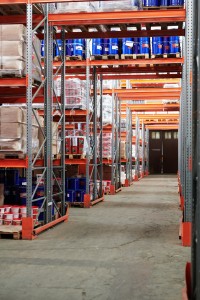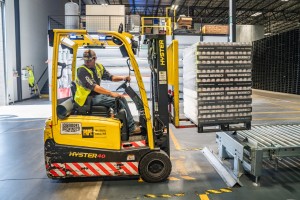
 Become a PowerPoint Guru by Dave Tracy
Become a PowerPoint Guru by Dave Tracy
Learn the methodologies, frameworks, and tricks used by Management Consultants to create executive presentations in the business world.

 Become a PowerPoint Guru by Dave Tracy
Become a PowerPoint Guru by Dave Tracy
 Majority of pharmaceutical companies are persisting with decade old processes and routines. They have transactional relationships with suppliers, lack of concerted efforts to progress ahead, and no vision to reap productivity rewards. The reasons for continuing with these traditional practices include tax regimes, regulatory hurdles, and stable revenues from customers dependent on existing industry offerings.
Majority of pharmaceutical companies are persisting with decade old processes and routines. They have transactional relationships with suppliers, lack of concerted efforts to progress ahead, and no vision to reap productivity rewards. The reasons for continuing with these traditional practices include tax regimes, regulatory hurdles, and stable revenues from customers dependent on existing industry offerings.
Disruption—spurred by technological Innovation, fluctuating customer demand patterns, and more agile and creative competitors—has forced the pharmaceutical sector to think of ways to face these challenges, survive, and thrive. One of the strategic response to this competitive disruption—by leading manufacturers—is to reexamine their manufacturing operations, embracing agile principles, reducing costs, revolutionizing procurement and distribution functions, and striving to achieve Operational Excellence. Above all, they view their supply chain not as a cost center, but as a source of Competitive Advantage.
The increasing influence of generic drugs is another challenge for large multinational pharmaceuticals. In the past, multinational companies (MNCs) dominated the market owing to possessing a number of high-market drugs protected under patents. Patent protection afforded them the leverage to set high prices on each product. The scenario is fast changing. Expiry of high-market drugs patents is creating a huge opening for generic competitors and the space is widening compared to the past.
In the past, pharma manufacturers were able to counter the threat to generic competitors by developing new drugs. However, this is becoming difficult and the new drugs pipeline is shrinking with time. R&D expenditure has continuously gone up, however, drug approval from the authorities has not kept paced with it. It has rather declined, straining the MNCs further.
Other disruptive factors include newer distribution methods, public health plans favoring generic drugs over proprietary ones due to cost effectiveness, the newer internet / mail delivery options displacing traditional pharmacy dispensing options. Pharmacy chains—e.g. Walgreens—have given a leverage to the retailers to negotiate reduction in medicine prices where again generics have an edge over MNCs.
Moreover, the trend of drugs purchased through a formal tender process is increasingly gaining acceptance, adding to the difficulties of large pharma manufacturers. Additionally, strict regulations are minimizing the cost benefits that MNCs traditionally enjoyed in the past.
All these factors have forced the pharma companies to reorganize their Supply Chains in a more flexible manner to manage complexities, bring in efficiency, and contain costs to compete in off-patent segment with generics.
Reorganization of a conventional pharmaceutical Supply Chain into an Agile, flexible, and inexpensive Supply Chain warrants developing Operational Excellence and Cost Reduction competencies. This necessitates 5 strategic steps (phases):
Let’s discuss these steps in detail.
Large pharma MNCs typically maintain the Supply Chain of all of their drugs with a single strategy of retaining high inventory and service levels. Such a strategy can only work for products having a high profit margin, in a static environment. It is not suitable for low-margin products, contrasting environments, and does not take into account fluctuations in demand patterns. An appropriate approach is to implement a multiple Supply Chains model based on individual products and markets.
The 2nd step in Pharma Supply Chain Reinvention involves quick distribution of different versions of products to markets based on demand. For low-margin products with high demand volatility, the Supply Chain Management Strategy should be to employ Pack-to-Order system. The Pack-to-Order approach involves developing a version of a product that could be timely dispatched to several markets of varying demand across the globe. This approach coupled with Postponement Strategy—where products are packed to order during later stages of production based on regional demand—assists in trimming down the inventory, reducing complicatedness, and enhancing Supply Chain nimbleness to demand volatility.
Interested in learning more about how to reinvent your Pharmaceutical Supply Chain? You can download an editable PowerPoint on Pharmaceutical Supply Chain Reinvention here on the Flevy documents marketplace.
You can download in-depth presentations on this and hundreds of similar business frameworks from the FlevyPro Library. FlevyPro is trusted and utilized by 1000s of management consultants and corporate executives. Here’s what some have to say:
“My FlevyPro subscription provides me with the most popular frameworks and decks in demand in today’s market. They not only augment my existing consulting and coaching offerings and delivery, but also keep me abreast of the latest trends, inspire new products and service offerings for my practice, and educate me in a fraction of the time and money of other solutions. I strongly recommend FlevyPro to any consultant serious about success.”
– Bill Branson, Founder at Strategic Business Architects
“As a niche strategic consulting firm, Flevy and FlevyPro frameworks and documents are an on-going reference to help us structure our findings and recommendations to our clients as well as improve their clarity, strength, and visual power. For us, it is an invaluable resource to increase our impact and value.”
– David Coloma, Consulting Area Manager at Cynertia Consulting
“FlevyPro has been a brilliant resource for me, as an independent growth consultant, to access a vast knowledge bank of presentations to support my work with clients. In terms of RoI, the value I received from the very first presentation I downloaded paid for my subscription many times over! The quality of the decks available allows me to punch way above my weight – it’s like having the resources of a Big 4 consultancy at your fingertips at a microscopic fraction of the overhead.”
– Roderick Cameron, Founding Partner at SGFE Ltd
Early 2000s saw a change of mind regarding the Globalization of commerce by members of the political and economic arenas. This change of mind was instigated by myths perpetuated against commerce Globalization because of the dichotomy that appeared between existing Operating Models of companies and needs of the emerging markets.
These perceived trade-offs that were myths included ideas like choosing between centrally-controlled Operating Model and local responsiveness model.
Proponents of the central model had the view that intellectual power and Innovation capability had to be centralized, all products and services brought in line everywhere, foregoing catering to diverse needs and demands of customers in every emerging market.
The converse view was that in order to have locally applicable distribution systems, proactive Supply Chains, and reduced costs of emerging-market management, it was necessary to devolve the company and operation as a loose federation.
This trade-off incompatibility was addressed by the Hub Strategy where, in place of a single center, companies set up principal office “hubs” in as many of the 20 gateway countries of the world as required—a global corporate structure with no headquarters.
These 20 gateway countries represent 70% of the world population and generate 80% of the world income. The gateway countries include Australia, Canada, France, Germany, Italy, Japan, the Netherlands, Spain, the United Kingdom, and the United States from the developed economies. Rest of the 10 are emerging markets of Brazil, China, India, Indonesia, Mexico, Russia, South Africa, South Korea, Thailand, and Turkey.
This new Business Model covers both the recognized advantages of developed markets and the possibilities of emerging economies. A model that handles decentralization, centralization, existing practices, and possible disruptions not as trade-offs, but as complements.
It is, however, important to understand that for the model to have its full impact, 3 core pillars have to be integrated and pursued simultaneously. The 3 Pillars of Globalization are:
Only business leadership that has taught itself and its teams to be very careful about where to customize, how to develop capabilities, and what to arbitrage are the ones reaping benefits from this model.
Let us delve a little deeper into the details of the 3-pillar Business Model.
Variation in needs, wants, and cultures of consumers makes it impossible to customize centrally. Providing products and services in a locally competitive manner is therefore central to become a global enterprise.
Customization entails fulfilling the requirements and wants of varied consumers, in areas such as product or service features, affordability, and cultural alignment. Hub Strategy provides the leverage to fulfill this demand by enabling companies to customize only in the 20 gateway countries.
Unity entails worldwide alignment of the company with, a unified central purpose, a body of exclusive first-rate knowledge, and capabilities that differentiate the company from all others.
Core purpose must be understood in the same manner by all functions of the company, in every geographical location.
Arbitrage is a methodical initiative that consists of increasing effectiveness and Cost Reduction by discovering materials, manufacturing methods, logistics practices, funds sourcing, or infrastructure that are less expensive.
Interested in learning more about the 3 Pillars of Globalization and its Case examples? You can download an editable PowerPoint on 3 Pillars of Globalization here on the Flevy documents marketplace.
You can download in-depth presentations on this and hundreds of similar business frameworks from the FlevyPro Library. FlevyPro is trusted and utilized by 1000s of management consultants and corporate executives. Here’s what some have to say:
“My FlevyPro subscription provides me with the most popular frameworks and decks in demand in today’s market. They not only augment my existing consulting and coaching offerings and delivery, but also keep me abreast of the latest trends, inspire new products and service offerings for my practice, and educate me in a fraction of the time and money of other solutions. I strongly recommend FlevyPro to any consultant serious about success.”
– Bill Branson, Founder at Strategic Business Architects
“As a niche strategic consulting firm, Flevy and FlevyPro frameworks and documents are an on-going reference to help us structure our findings and recommendations to our clients as well as improve their clarity, strength, and visual power. For us, it is an invaluable resource to increase our impact and value.”
– David Coloma, Consulting Area Manager at Cynertia Consulting
“FlevyPro has been a brilliant resource for me, as an independent growth consultant, to access a vast knowledge bank of presentations to support my work with clients. In terms of RoI, the value I received from the very first presentation I downloaded paid for my subscription many times over! The quality of the decks available allows me to punch way above my weight – it’s like having the resources of a Big 4 consultancy at your fingertips at a microscopic fraction of the overhead.”
– Roderick Cameron, Founding Partner at SGFE Ltd
Cut-throat competition in industries has driven companies to find ways to reduce costs while increasing efficiency. To accomplish this, most companies have skillfully endeavored to streamline Sales, Operations Planning, Forecasting, Inventory Management, and Logistics.
One area that has still not grabbed industry’s attention is out-bound Supply Chain Management–from packaging to final delivery. Companies generally neglect Supply Chain simply because they do not consider it their core competency.
Significant Cost Reduction in the Supply Chain can be achieved by focusing on 2 main cost categories:
Warehousing and Transportation represent a significant portion of the total Logistics costs. Implementing improvement programs, without any significant capital investments, can enable 20-50% cost saving in Warehousing, 40% in Transportation costs, flexibility, and better service.
Supply Chain Cost Reduction in Transportation and Warehousing has vast potential, not only in terms of costs, but also Process Improvement using Lean Six Sigma (LSS) techniques.
The approach to Supply Chain Cost Reduction in Warehousing encompasses 3 phases:
Meticulous and persistent application of Lean Management and Six Sigma techniques is at the core of reshaping Warehousing Operations and eradicating sources of waste, variability, and inflexibility. This article is an overview of the 6 building blocks used in Implementing Lean Six Sigma (LSS)—the 3rd phase of the approach to Supply Chain Cost Reduction in Warehousing:
Let us dive a little deeper into some of the building blocks.
Business Processes present a huge opportunity for improvement by eliminating redundancies and sources of waste in Warehouse operations (e.g., unnecessary motion or double-handling in Manufacturing). Each source of waste represents extra costs and inflexibility that can be reduced or eliminated.
Business Process Improvement can help reduce:
This building block of Implementing Lean Six Sigma aims at avoiding overstaffing of full-time employees and at the same time maintaining a well-trained, efficient workforce.
Streamlining this building block leverages the following benefits to organizations:
This building block aims at using existing Performance Management levers to improve Employee Performance through morale boosting and awareness exercises. A laser-focus on the performance element helps the leadership achieve the following benefits:
Given the existing industry cost and performance demands, wasteful or unpredictable Warehouse operations lose more than money. This can do rapid and permanent harm to a company’s reputation with customers since distribution is the logistical interface with the customer.
Improving Warehouse Operations is a significant area not only for Cost Reduction, but also a source of refining Customer Value Proposition.
Interested in learning more about Supply Chain Cost Reduction in Warehousing and Lean Six Sigma? You can download an editable PowerPoint on Supply Chain Cost Reduction: Warehousing here on the Flevy documents marketplace.
Gain the knowledge and develop the expertise to become an expert in Supply Chain Management (SCM). Our frameworks are based on the thought leadership of leading consulting firms, academics, and recognized subject matter experts. Click here for full details.
Supply Chain Management (SCM) is the design, planning, execution, control, and monitoring of Supply Chain activities. It also captures the management of the flow of goods and services.
In February of 2020, COVID-19 disrupted—and in many cases halted—global Supply Chains, revealing just how fragile they have become. By April, many countries experienced declines of over 40% in domestic and international trade.
COVID-19 has likewise changed how Supply Chain Executives approach and think about SCM. In the pre-COVID-19 era of globalization, the objective was to be Lean and Cost-effective. In the post-COVID-19 world, companies must now focus on making their Supply Chains Resilient, Agile, and Smart. Additional trends include Digitization, Sustainability, and Manufacturing Reshoring.
Learn about our Supply Chain Management (SCM) Best Practice Frameworks here.
You can download in-depth presentations on this and hundreds of similar business frameworks from the FlevyPro Library. FlevyPro is trusted and utilized by 1000s of management consultants and corporate executives. Here’s what some have to say:
“My FlevyPro subscription provides me with the most popular frameworks and decks in demand in today’s market. They not only augment my existing consulting and coaching offerings and delivery, but also keep me abreast of the latest trends, inspire new products and service offerings for my practice, and educate me in a fraction of the time and money of other solutions. I strongly recommend FlevyPro to any consultant serious about success.”
– Bill Branson, Founder at Strategic Business Architects
“As a niche strategic consulting firm, Flevy and FlevyPro frameworks and documents are an on-going reference to help us structure our findings and recommendations to our clients as well as improve their clarity, strength, and visual power. For us, it is an invaluable resource to increase our impact and value.”
– David Coloma, Consulting Area Manager at Cynertia Consulting
“FlevyPro has been a brilliant resource for me, as an independent growth consultant, to access a vast knowledge bank of presentations to support my work with clients. In terms of RoI, the value I received from the very first presentation I downloaded paid for my subscription many times over! The quality of the decks available allows me to punch way above my weight – it’s like having the resources of a Big 4 consultancy at your fingertips at a microscopic fraction of the overhead.”
– Roderick Cameron, Founding Partner at SGFE Ltd
 Warehousing costs at most firms are extraordinarily higher than they ought to be. Across the world, organizations spend around €300 billion annually on Warehouse Management. With the boom in online retail stores and the increasing complexity of Supply Chain Management, this spending is going to surge further.
Warehousing costs at most firms are extraordinarily higher than they ought to be. Across the world, organizations spend around €300 billion annually on Warehouse Management. With the boom in online retail stores and the increasing complexity of Supply Chain Management, this spending is going to surge further.
The leadership at these organizations understands that they should spend less on Warehousing operations, but is not aware of the real costs associated with it. Most leaders are unable to tell how much is their human resources cost per facility.
Lack of appreciation of true Warehousing operations costs is one of the main reasons for failure of most Business Transformation programs. Without this knowledge, the leadership is unable to comprehend where the improvement areas lie and how much value creation can be achieved from those.
Ascertaining these costs warrants a clear approach, which many organizations lack. Most firms inquire about their operational costs from 3rd party Logistics (3PL) providers—by soliciting requests for quotations (RFQs). However, this does not give an idea of what these principal activities really cost. The most common approaches to Warehouse costing include:
The Benchmarking method uses a top-down approach to analyze costs based on industry benchmarks. However, accessibility of benchmarks at lower levels is hard to access, since benchmarks available for comparison are predominantly at high levels—e.g., Total Warehouse Cost as a proportion of Cost of Goods Sold. Industry Benchmarking fails to take into consideration distinct product or service offerings.
Cleansheet (or a Bottom-up Analysis) is a more comprehensive method to estimate Warehousing costs. It is a numerical approach to ascertain precise costs of critical components of Warehousing operations, including facility spread out, workforce, and equipment. This method facilitates in understanding where the cost exceeds and how it can be eliminated.
The focus of the Cleansheet Analysis is on determining the lowest possible cost of each major element, and comparing it with the actual cost being paid. Identifying the lowest costs of major elements allows the organization to determine the most problematic areas and confront major cost inconsistencies.
The Cleansheet Analysis comprises of 3 main steps:
Let’s dig a bit deeper into the initial step.
The first step of the Cleansheet Analysis entails scoping the Warehousing facility’s configuration, work, team, volumes, and orders. Specifically, this includes evaluating:
Interested in learning more about the steps to using a Cleansheet Analysis? You can download an editable PowerPoint presentation on Warehouse Costing: Cleansheet Analysis here on the Flevy documents marketplace.
You can download in-depth presentations on this and hundreds of similar business frameworks from the FlevyPro Library. FlevyPro is trusted and utilized by 1000s of management consultants and corporate executives. Here’s what some have to say:
“My FlevyPro subscription provides me with the most popular frameworks and decks in demand in today’s market. They not only augment my existing consulting and coaching offerings and delivery, but also keep me abreast of the latest trends, inspire new products and service offerings for my practice, and educate me in a fraction of the time and money of other solutions. I strongly recommend FlevyPro to any consultant serious about success.”
– Bill Branson, Founder at Strategic Business Architects
“As a niche strategic consulting firm, Flevy and FlevyPro frameworks and documents are an on-going reference to help us structure our findings and recommendations to our clients as well as improve their clarity, strength, and visual power. For us, it is an invaluable resource to increase our impact and value.”
– David Coloma, Consulting Area Manager at Cynertia Consulting
“As a small business owner, the resource material available from FlevyPro has proven to be invaluable. The ability to search for material on demand based our project events and client requirements was great for me and proved very beneficial to my clients. Importantly, being able to easily edit and tailor the material for specific purposes helped us to make presentations, knowledge sharing, and toolkit development, which formed part of the overall program collateral. While FlevyPro contains resource material that any consultancy, project or delivery firm must have, it is an essential part of a small firm or independent consultant’s toolbox.”
– Michael Duff, Managing Director at Change Strategy (UK)
 Technological advancement has come a long way. Artificial Intelligence is taking charge of a number of repetitive logistics tasks. Organizations are benefiting from Automation in streamlining their cumbersome processes and cutting down delivery times.
Technological advancement has come a long way. Artificial Intelligence is taking charge of a number of repetitive logistics tasks. Organizations are benefiting from Automation in streamlining their cumbersome processes and cutting down delivery times.
Automation is profoundly affecting the way Logistics are handled. It is disrupting the entire Logistics Supply Chain, not just the warehousing, picking, and sorting functions. The impact of Automation on roads, rails, and ports is immense. Ports are increasingly embracing Automation, but they haven’t yet started getting the return on their investments.
In Logistics, ocean and air shipment has potential for Automation—which is certainly under way—but its effect on enhancing throughput is yet to be seen. Logistics operations are being transformed at quite a pace with new models, concepts, and offerings evolving rapidly. With the current pace of technology evolution, experts believe Logistics operations would be done autonomously in the not too-distant future.
The COVID-19 pandemic has disrupted businesses and industries alike significantly. Businesses are trying to grapple with the ambiguities the situation has presented to them. Automation is being viewed by many Logistics companies to be the only option to prepare for and survive in the future.
Logistics companies are exploring ways to automate their businesses mainly due to 3 trends that are shaping their industry. These 3 trends include:
Let’s talk about these trends in a bit detail.
Labor markets are stiffening globally with lowest unemployment rates and high wages. Online retailers everywhere have a huge demand for skilled workers. This demand rise steeply in the holiday season. A sizable workforce is engaged in Supply Chain related jobs—about 4 million only in the US as packers, handlers, and supervisors in warehouses. This translates to $100 billion in payroll costs. Automation will definitely reduce this cost head. However, it will have implications for the workforce.
Another trend that is affecting the Logistics industry immensely is the explosive growth of E-commerce retailers. The sales of e-tailers are growing at a consistent pace every year. With this trend, the range of products has grown considerably, benefiting the logistics businesses. Logistic companies are making significant profit from this large volume of online shipment orders—saving about $12 to $20 on a sale of $100.
Interested in learning more about the trends that are shaping the Logistics operations? You can download an editable PowerPoint presentation on 3 Trends Driving Logistics Automation here on the Flevy documents marketplace.
You can download in-depth presentations on this and hundreds of similar business frameworks from the FlevyPro Library. FlevyPro is trusted and utilized by 1000s of management consultants and corporate executives. Here’s what some have to say:
“My FlevyPro subscription provides me with the most popular frameworks and decks in demand in today’s market. They not only augment my existing consulting and coaching offerings and delivery, but also keep me abreast of the latest trends, inspire new products and service offerings for my practice, and educate me in a fraction of the time and money of other solutions. I strongly recommend FlevyPro to any consultant serious about success.”
– Bill Branson, Founder at Strategic Business Architects
“As a niche strategic consulting firm, Flevy and FlevyPro frameworks and documents are an on-going reference to help us structure our findings and recommendations to our clients as well as improve their clarity, strength, and visual power. For us, it is an invaluable resource to increase our impact and value.”
– David Coloma, Consulting Area Manager at Cynertia Consulting
“As a small business owner, the resource material available from FlevyPro has proven to be invaluable. The ability to search for material on demand based our project events and client requirements was great for me and proved very beneficial to my clients. Importantly, being able to easily edit and tailor the material for specific purposes helped us to make presentations, knowledge sharing, and toolkit development, which formed part of the overall program collateral. While FlevyPro contains resource material that any consultancy, project or delivery firm must have, it is an essential part of a small firm or independent consultant’s toolbox.”
– Michael Duff, Managing Director at Change Strategy (UK)
 Companies looking to improve efficiency and reduce costs can gain significant ground in the Supply Chain Management function by incorporating Lean Management and Six Sigma techniques.
Companies looking to improve efficiency and reduce costs can gain significant ground in the Supply Chain Management function by incorporating Lean Management and Six Sigma techniques.
Reason this area has gone under the radar is that companies do not consider Supply Chain to be their core competency.
Not only Warehousing but Transportation also has almost the same potential in terms of opportunities for Cost Reduction and Process Improvement. The approach to Transportation Costs Reduction, though, is different to that of Supply Chain Cost Reduction in Warehousing. This is in part due to the complexity in Transportation Costs, as the costs come from numerous widely distributed individual operations every year.
The approach to Supply Chain Cost Reduction in Transportation encompasses 2 phases:
Let us delve a little deeper into the 2 phases.
Improvement in Transportation operations is hindered, in most cases, by enormous variability in operations, diverse service levels being demanded by various customers, and a multitude of transport providers delivering services in a variety of ways.
Transportation Costs of between 20-30% can be saved by compiling a complete perspective of the overall Transportation operations of an organization. The evaluation will also reveal essential service categories that have a skewed effect on Cost.
Identification of the Cost Drivers is imperative for the companies to develop a systematic approach to Transportation Cost Reduction. This systematic approach involves observing 4 main levers of Cost Optimization opportunities:
The 4 levers of Cost Reductions help in countering the issues impacting Transportation Costs and enabling significant savings.
Significant Cost Reductions can be gained by identifying mutual benefits and risks for both companies and suppliers in addition to understanding customer breakpoints that enable Customer Centric Design.
Let us consider a few instances where Cost Reduction can have a quick impact.
Interested in learning more about the phases and cost drivers of Supply Chain Cost Reduction in Transportation? You can download an editable PowerPoint on Supply Chain Cost Reduction: Transportation here on the Flevy documents marketplace.
Gain the knowledge and develop the expertise to become an expert in Supply Chain Management (SCM). Our frameworks are based on the thought leadership of leading consulting firms, academics, and recognized subject matter experts. Click here for full details.
Supply Chain Management (SCM) is the design, planning, execution, control, and monitoring of Supply Chain activities. It also captures the management of the flow of goods and services.
In February of 2020, COVID-19 disrupted—and in many cases halted—global Supply Chains, revealing just how fragile they have become. By April, many countries experienced declines of over 40% in domestic and international trade.
COVID-19 has likewise changed how Supply Chain Executives approach and think about SCM. In the pre-COVID-19 era of globalization, the objective was to be Lean and Cost-effective. In the post-COVID-19 world, companies must now focus on making their Supply Chains Resilient, Agile, and Smart. Additional trends include Digitization, Sustainability, and Manufacturing Reshoring.
Learn about our Supply Chain Management (SCM) Best Practice Frameworks here.
You can download in-depth presentations on this and hundreds of similar business frameworks from the FlevyPro Library. FlevyPro is trusted and utilized by 1000s of management consultants and corporate executives. Here’s what some have to say:
“My FlevyPro subscription provides me with the most popular frameworks and decks in demand in today’s market. They not only augment my existing consulting and coaching offerings and delivery, but also keep me abreast of the latest trends, inspire new products and service offerings for my practice, and educate me in a fraction of the time and money of other solutions. I strongly recommend FlevyPro to any consultant serious about success.”
– Bill Branson, Founder at Strategic Business Architects
“As a niche strategic consulting firm, Flevy and FlevyPro frameworks and documents are an on-going reference to help us structure our findings and recommendations to our clients as well as improve their clarity, strength, and visual power. For us, it is an invaluable resource to increase our impact and value.”
– David Coloma, Consulting Area Manager at Cynertia Consulting
“FlevyPro has been a brilliant resource for me, as an independent growth consultant, to access a vast knowledge bank of presentations to support my work with clients. In terms of RoI, the value I received from the very first presentation I downloaded paid for my subscription many times over! The quality of the decks available allows me to punch way above my weight – it’s like having the resources of a Big 4 consultancy at your fingertips at a microscopic fraction of the overhead.”
– Roderick Cameron, Founding Partner at SGFE Ltd
 Shortage of labor, intensified demand from e-tailers (online retailers), and technological disruption is forcing organizations in the Logistics and Warehousing industry to embrace technology, particularly Automation.
Shortage of labor, intensified demand from e-tailers (online retailers), and technological disruption is forcing organizations in the Logistics and Warehousing industry to embrace technology, particularly Automation.
An investment in automating the picking, packing, sorting, storing, and shipping items can yield high returns for organizations. Warehouses that will sort out the dynamics of e-commerce, select the ideal technology to implement, and eliminate uncertainties in their supplier contracts will outpace others.
Automation is facilitating the Warehousing operations predominantly by:
In these two categories, there are 10 technologies that are fast disrupting the Supply Chain function and creating a breakthrough for warehouses. These include:
Let’s discuss a few of these disruptive technologies in detail.
Multi-shuttle systems (MSS) are employed to store and retrieve goods automatically—using automated storage and retrieval system (AS/RS). This system is able to transport goods 3 dimensionally (on pallets), and is instrumental in enhancing the throughput, flexibility and efficiency levels.
MSS consists of 3 modules, coordinated by a software module: a Shuttle car powered by power caps for 24-hour operations and moved by powerful motors, high-performance vertical lifts, and a special carrier to move the shuttle car to the exact location. Communication in the multilevel systems’ carrier and shuttles is managed by radio links, whereas the movement is controlled by an integrated control system.
Multilevel Shuttle Storage System is ideal for cold storage, buffer storage, dispatching warehouses, commissioning warehouses, supply and distribution centers, and factories.
MSS offers a number of benefits, e.g.:
Optical Recognition and Sensor technology expedites processes and increases productivity. This technology is at the foundation of IoT, smart cities, automobiles and laser-guided vehicles, smartphones, wearable technologies, drones, barcode readers, and more.
Optical Recognition devices use a light source to read characters and barcodes. They then convert these characters into digital data. Optical Recognition devices scan items. At times, this scanning is done on 6 axes. The character recognition software then relates this image to the shapes of individual characters.
Optical recognition devices today use sensors to detect and respond to a specified input—light, sound, motion, pressure, temperature. Once an input is received, a sensor either produces a resulting output—in the form of a light or alarm—or forward the information received to a network for processing.
Optical recognition sensors facilitate in:
Connected Conveyor Systems are useful in transporting heavy or bulky materials. These systems allow quick and efficient transport of a variety of materials (e.g. totes, cartons) in different warehouse configurations. Advanced conveyor systems and connections perform various material handling requirements including accumulation, transportation, diverting, merging, and sorting products.
Interested in learning more about the other technologies reshaping the warehousing operations? You can download an editable PowerPoint presentation on Warehouse Automation: 10 Technologies here on the Flevy documents marketplace.
You can download in-depth presentations on this and hundreds of similar business frameworks from the FlevyPro Library. FlevyPro is trusted and utilized by 1000s of management consultants and corporate executives. Here’s what some have to say:
“My FlevyPro subscription provides me with the most popular frameworks and decks in demand in today’s market. They not only augment my existing consulting and coaching offerings and delivery, but also keep me abreast of the latest trends, inspire new products and service offerings for my practice, and educate me in a fraction of the time and money of other solutions. I strongly recommend FlevyPro to any consultant serious about success.”
– Bill Branson, Founder at Strategic Business Architects
“As a niche strategic consulting firm, Flevy and FlevyPro frameworks and documents are an on-going reference to help us structure our findings and recommendations to our clients as well as improve their clarity, strength, and visual power. For us, it is an invaluable resource to increase our impact and value.”
– David Coloma, Consulting Area Manager at Cynertia Consulting
“As a small business owner, the resource material available from FlevyPro has proven to be invaluable. The ability to search for material on demand based our project events and client requirements was great for me and proved very beneficial to my clients. Importantly, being able to easily edit and tailor the material for specific purposes helped us to make presentations, knowledge sharing, and toolkit development, which formed part of the overall program collateral. While FlevyPro contains resource material that any consultancy, project or delivery firm must have, it is an essential part of a small firm or independent consultant’s toolbox.”
– Michael Duff, Managing Director at Change Strategy (UK)
In today’s digital age, organizations are faced with the changing nature of the demand curve and the element of uncertainty in the supply chain. For operations  teams, the challenge and competitive advantage have become: How well do you respond and execute against ongoing uncertainty.
teams, the challenge and competitive advantage have become: How well do you respond and execute against ongoing uncertainty.
With the world being so unpredictable, chaos is now the new normal. Timetables and priorities have shifted. A supplier fails to deliver. Demands on supply chains are increasing exponentially. A few years ago, supply chain performance was all about batch quantities, timetables, and lead times. Today, millions of packages are shipped in a day, with many with just only a few items.
In the face of this upheaval, supply chains try to predict what will happen, then optimize performance against plan. Most often, those plans are not met. The path forward demands a bold leap in supply chain performance.
Chaos is the new normal. This is the central challenge companies have to contend with today. Demand on the Supply Chain is increasing exponentially whereas Supply Chain performance before used to be all about batch quantities, timetables, and lead times. Today, times have changed.
Business Transformation has become pertinent. Timetables and priorities have shifted and, in fact, suppliers are now finding themselves unable to deliver at the required time demanded by the market. Whereas before deliveries were in batch quantities, today millions of packages are shipped every day with many having just a few items. Customers are now encouraged to order multiple sizes and colors of the same items, choose what they like best and return the rest.
In this upheaval, Supply Chains must respond accordingly. There have been attempts to predict what will happen with performance being optimized against the plan. Companies are increasingly investing in Supply Chain capabilities. Yet, these have triggered nonproductive finger-pointing and disappointing results.
Something is missing. A Supply Chain Strategy, as part of Strategy Development, is now essential to be able to pursue a bold leap in Supply Chain performance.
The Digital Supply Chain Strategy is the new approach to Supply Chain resilience. This is best undertaken using a 2-prong approach.
The Digital Age calls for a new approach to Supply Chain Resilience.
Why is Supply Chain Resilience important today? In today’s digital age, companies can expect to encounter potential disruptions. These potential disruptions can effectively be addressed using the best strategy. Automation and smart software are effective tools for minimizing disruptions on business operations. Embracing digital advancements will provide organizations real-time data for a more reliable supply value chain. Definitely, there will be integration challenges. But the use of Digital Age Supply Chain Strategies will guide companies to counter these potential disruptions and challenges.
Interested in gaining more understanding of Digital Supply Chain Strategy? You can learn more and download an editable PowerPoint about Digital Supply Chain Strategy here on the Flevy documents marketplace.
Are you a management consultant?
You can download this and hundreds of other consulting frameworks and consulting training guides from the FlevyPro library.
 The Value Chain concept, first described by Dr. Michael Porter in 1985, is a series of actions that a firm—in a specific industry—accomplishes to produce a valuable product or service for the market. The value chain notion visualizes the process view of an organization, perceiving a manufacturing or service organization as a system comprised of subsystems of inputs, transformation processes, and outputs.
The Value Chain concept, first described by Dr. Michael Porter in 1985, is a series of actions that a firm—in a specific industry—accomplishes to produce a valuable product or service for the market. The value chain notion visualizes the process view of an organization, perceiving a manufacturing or service organization as a system comprised of subsystems of inputs, transformation processes, and outputs.
Another way to define the Value Chain principle is, “transforming business inputs into outputs, thereby creating a value much better than the original cost of producing those outputs.” These inputs, processes, and outputs entail acquiring and utilizing resources—finances, workforce, materials, equipment, buildings, and land.
An industry Value Chain includes the suppliers that provide the inputs, creation of products by a firm, distribution value chains, till the products reach the customers. The way Value Chain activities are planned and executed determines the costs and profits.
Value chains consist of set of activities that products must undergo to add value to them. These activities can be classified into 2 groups:
Primary activities in Porter’s Value Chain are associated with the production, sale, upkeep, and support of a product or service offering, including:
The secondary activities and processes in Porter’s Value Chain support the primary activities. For instance:
The analysis of a Value Chain offers a number of benefits, including:
Businesses seeking competitive advantage often turn to Value Chain models to identify opportunities for cost savings and differentiation in the production cycle. The Value Chain Analysis (VCA) process encompasses the following 3 steps:
The first step in Value Chain Analysis necessitates identification of activities that are essential to undertake in order to deliver product or service offerings. Key activities in this stage include:
The second phase of the Value Chain Analysis necessitates identifying tasks required under each primary activity that create maximum value. This phase is characterized by:
Interested in learning more about the other phases of the Value Chain Analysis Approach? You can download an editable PowerPoint on Strategy Classics: Porter’s Value Chain here on the Flevy documents marketplace.
You can download this and hundreds of other consulting frameworks and consulting training guides from the FlevyPro library.
 As the last decisive step in customer service, a warehouse ensures cost effective distribution. Latest technological innovation has turned warehousing into a competitive advantage. It offers untapped potential for improvement. However, warehousing is a hugely neglected part of global supply chains. There is inconsistency in picking, packing and shipping orders, storing receipts, and managing inventory and logistics operations.
As the last decisive step in customer service, a warehouse ensures cost effective distribution. Latest technological innovation has turned warehousing into a competitive advantage. It offers untapped potential for improvement. However, warehousing is a hugely neglected part of global supply chains. There is inconsistency in picking, packing and shipping orders, storing receipts, and managing inventory and logistics operations.
These and the following roadblocks in the way of smooth warehousing operations and Lean Management exist in every traditional warehouse:
These shortcomings call for implementing Lean Warehousing methodology to unlock improvement opportunities and savings in operational, efficiency, and maintenance related costs. First initiated by Toyota, the Lean Warehousing approach has a deep emphasis on eliminating 3 basic limitations: waste, variability, and inflexibility. The Lean Warehousing methodology focuses on the following 3 improvement areas:
The Lean Warehousing methodology concentrates on increasing productivity and reducing operating costs. This is achieved by:
A Lean Warehouse seeks to take the customer quality to the next level by avoiding:
Improving service levels is at the center of a Lean Warehousing methodology, which involves:
Lean Warehousing Transformation entails streamlining operations to identify waste, know how to increase service levels, implement standardization and innovative ideas, and learn to evaluate and manage performance. Such transformation becomes a reality in an experiential learning environment and by developing organizational capabilities in 3 critical areas:
The organizational capability to configure and optimize all company physical assets and resources to create value and minimize losses. The focus areas under operating systems include eradicating variability, encouraging flexibility, and promoting end-to-end design.
The organizational capability to strengthen formal structures, processes, and systems necessary to manage the operating system to achieve business goals. The focus areas under Management Infrastructure are performance management, organizational design, capability building, and functional support process.
The organizational capability to manage the way people think, feel, and act in the workplace individually as well as collectively. The target areas to focus on here include a compelling purpose, collaborative execution, up-to-date skills, drive to improve, and committed leadership.
Lean Warehousing Transformation necessitates developing a “Model Warehouse,” which presents facilities for supply chain people to practically experience state-of-the-art warehouse operations in a modern warehouse and shop-floor environment. The Model Warehouse incorporates newest technology and systems, and offers real-life conditions for building capabilities—i.e., optimization of storage, pick and pack, and dispatch processes. Newest technologies—e.g., Smart Glasses and HoloLenses—available at the facility help improve the performance of pickers significantly and execute multi-order picking efficiently.
Such a setting allows people to observe and analyze the performance of an exemplary warehouse and implement this knowledge at their own premises. Leading organizations organize a week-long rigorous knowledge sharing workshop—in an experiential learning environment of a Model Warehouse—for their people to have a hands-on experience to learn Lean Warehousing, actual picking, packing, root cause analysis, and performance management. The participants of the Model Warehouse Knowledge Sharing Workshop are excellent candidates for “change agents” to implement Lean Transformation.
Interested in learning more about Lean Warehousing, Model Warehouse Implementation, and Lean Warehousing Transformation? You can download an editable PowerPoint on Lean Warehousing Transformation here on the Flevy documents marketplace.
You can download this and hundreds of other consulting frameworks and consulting training guides from the FlevyPro library.
Error: Twitter did not respond. Please wait a few minutes and refresh this page.